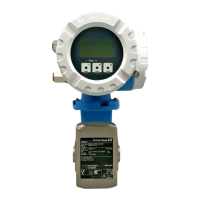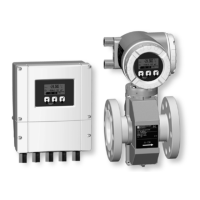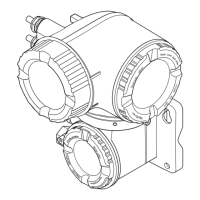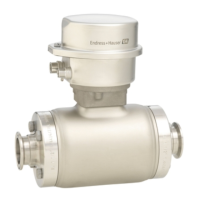6 Commissioning Promag 53 PROFIBUS-DP/-PA
96 Endress+Hauser
Output data Display value
The display value allows you to transfer a measured value which has been calculated
in the automation control system directly to the Promag. This measured value is a dis-
play value which can be assigned to the main line, the secondary line and the info line
of the display. The display value contains 4 bytes measured value and 1 byte status.
The status is displayed as being OK, UNCERTAIN or BAD (see Page 65).
Data transfer from the automation control system to Promag 53 (display value)
Note:
The status can be entered freely and will be interpreted in accordance with the status
coding in Profile Specification 3.0.
Example:
The concentration is calculated in % f
(temperature/density)
in the automation control
system. The temperature and density status is transferred with the two cyclic measured
values and can therefore be shown directly in the automation control system together
with the calculated concentration.
Control variables (output data) manufacturer-specific
Promag 53 is capable of processing control variables during the cyclic data exchange
e.g the switching on positive zero return.
The following table shows the control variables (output data) that can be transferred to
Promag 53.
Data transfer from the automation control system to Promag 53 (Control block)
Note:
A control variable can be executed through the cyclic data exchange each time the out-
put byte changes from “0” to another bit pattern. It will then be necessary to reset to “0”
before a further control variable can be executed. The transition from any bit pattern to
“0” will not have any effect.
Output
byte
Process parameter Access
type
Comment/Data format Factory set-
ting unit
6, 7, 8, 9 Display value write
32-bit floating point number
(IEEE-754)
Illustration
→ Page 93
ao
10 Status Display value read - –
Output
byte
Process
parameter
Access
type
Comment/Control variable Factory set-
ting unit
11 Control
variable
write This parameter is manufacturer-specific
and can control the following control vari-
ables:
0
→ 1: Reserved
0
→ 2: Positive zero return ON
0
→ 3: Positive zero return OFF
0
→ 4: Reserved
0
→ 5: ECC ON
0
→ 5: ECC OFF
–
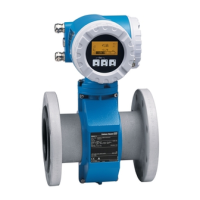
